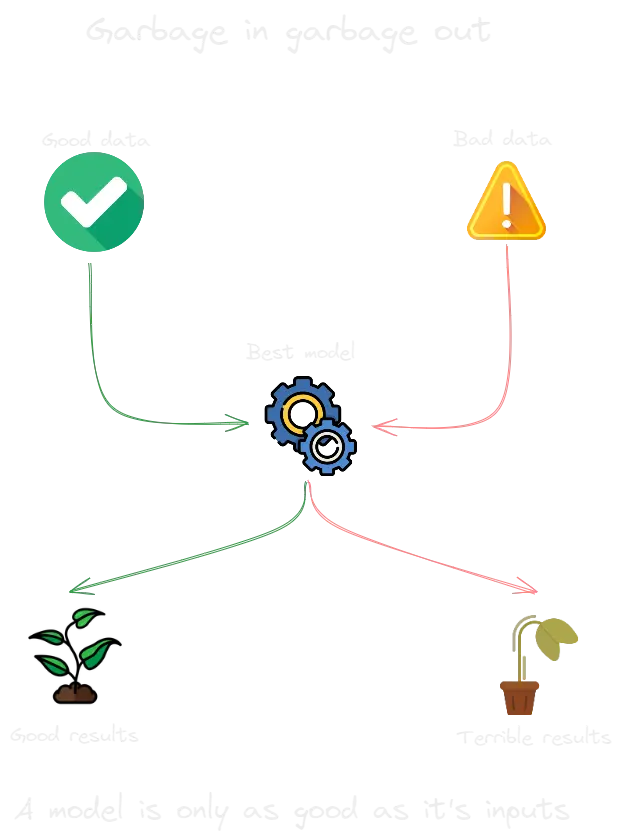Garbage in Garbage out
Notes
The idea that the quality of a model (an assumption about the connection between a variable and an outcome) is only as good as its input data. For example, when testing a drug effectiveness, if you only include healthy young people for the group who took the drug, and elderly prone-to-sickness people who didn't take the drug, it is not surprising that you might find differences between the groups, creating a false positive result about the drug's effectiveness Selection Bias.
Therefore, when we design a system (or a model) it is not enough to think about the different components interact with each other, but also how this system interacts with the world. For example, habits are examples of automated systems that rarely care about the inputs. We can have good habits such as exercising and eating healthy, but also bad habits such as being prone to anger or mindlessly doom scrolling. Both are examples of the same system, yet one takes inputs into considerations.
Similarly, if our decision making is biased, for example due to over confidence, Present Bias, Self Bias, it is unsurprising that we will make bad decisions, even if it seems that we have checked all the relevant boxes. The process itself is not enough, we need to verify our intuitions and our Perspective..
Fortunately, this also means that it's true the other way around. Pruning the inputs such that only good inputs remain, is very effective in making sure that the outcome will be positive, regardless of the process. For example, having only healthy food at the house almost guarantees that we will eat healthy (at least on average), no matter what our cooking/eating habits are like. Environmental design
Visual

Overview
🔼Topic:: Statistics (MOC) ◀Origin:: 🔗Link::